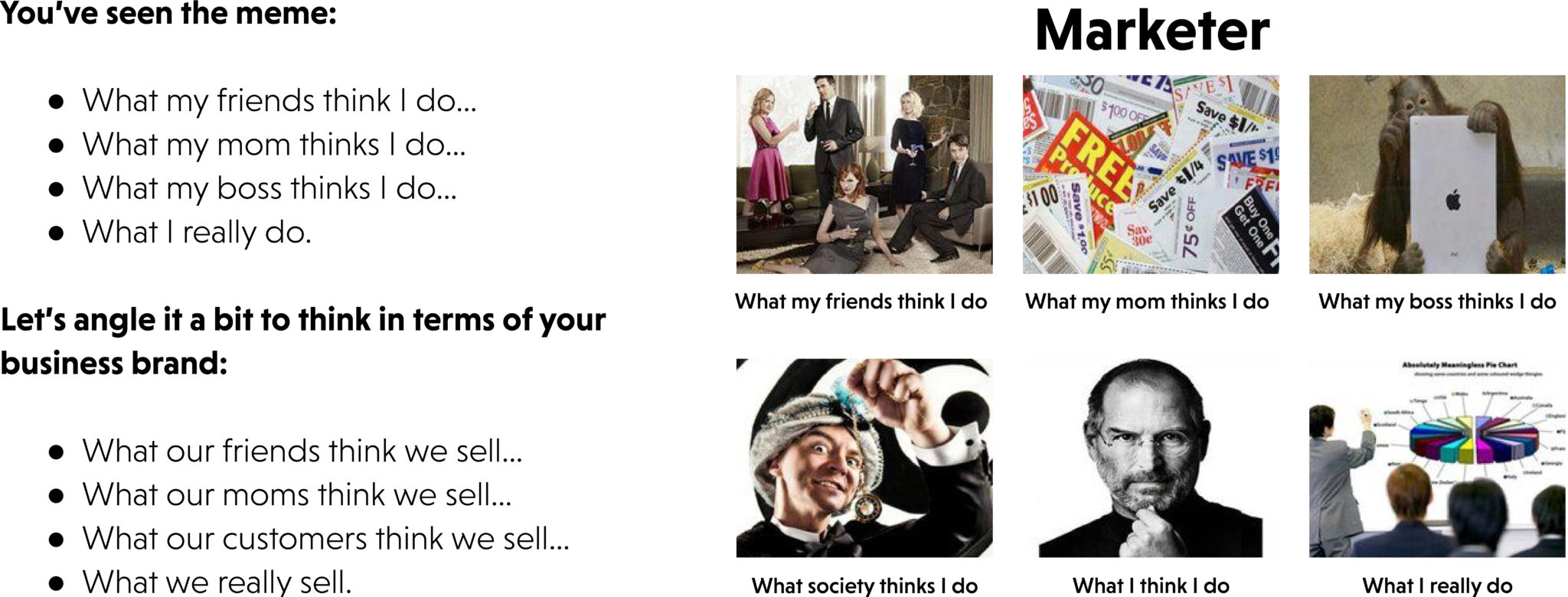
Selling. Whether it’s a product or a service, you can’t sell it if you don’t market it. And marketing works best when it conveys a brand customers can connect with.
Marketing Differentiation—What it is and What it isn’t
Marketing differentiation is not the catalog of products or menu of services that your company offers.
Differentiation is the strategic orienting of your products and services to the customers who need and want them most. In a word, it is your “brand.” The essence of your company’s identification.
What do you think of when you see the signage for Nike? Or New Balance? For Red Bull? Mountain Dew? All of these brands convey energy, activity, a readiness for adventure, a willingness to live life to its fullest.
These companies have all effectively created brands and marketed them to convey a lifestyle oriented toward a specific demographic. And they have positioned their products to be central to that lifestyle and that demographic.
Why Branding?
But you’re not an athletic shoe company, you say. Or an energy drink or popular soft drink.
No, but when Nike and New Balance started out, they were nothing more than shoe companies, selling a commodity. Red Bull and Mountain Dew could have been any product in a vending machine.
But through branding and strategic marketing they became standout symbols of their industries. Nike went on to differentiate itself from New Balance. Red Bull differentiated itself from Mountain Dew. And New Balance and Mountain Dew have identities all their own.
Even those who don’t purchase these products know what they are.
But plenty of people do purchase them—consumers within and sometimes outside of their targeted demographic.
And that’s what you want. You want both your current customers and prospective customers to think of you first to fulfill their needs and desires.
Branding helps explain the standout features of your products and services.
A branded company is viewed as tried, tested, and true.
Branding conveys consistency.
And branding sends the message that what you are selling is more than just a commodity.
Marketing Objectives
Knowing what you want to communicate to your customers is key to effective branding and marketing.
To start with, in order to differentiate your company and its offerings, you will need to:
- Know and convey your values and your mission;
- Position your products and services to the appropriate demographic;
- Effectively communicate your “wants” to current and prospective customers.
However, a standout brand doesn’t start on day one.
You build your marketing journey through design, strategy, branding, positioning, purpose, and function.
Calderon Textiles’ Marketing Journey
Let’s use Calderon’s marketing journey as an example of a path toward brand identification and differentiation.
Back in the 1980s and 1990s, when Calderon Textiles was an infant company, we focused on buying and selling commodities.
In the late 1990’s through the early 2000s, Calderon honed in on our customer base and developed specific product characteristics that met the needs and wants of those customers.
Then in the mid-2000s and into the 2010s, Calderon developed brand identities to convey specific product purposes.
Throughout the 2010s, we focused on tailoring products and services to the needs of individual customers.
And now in the 2020s, Calderon has embraced our brand, re-designed our logo, and rebuilt our website to fit our mission and values.
Calderon’s brand and our marketing strategy convey the values that drive Calderon’s mission:
- Our culture of family;
- A product line of high quality, consistent products;
- Open communication;
- A mission of providing educational value;
- Pride in our corporate brand.
Calderon’s Marketing Method
A brand can’t stand alone to win customers over. Calderon Textiles employs five key strategies to market our brand.
- We work to align opportunity and production selection.
- We employ a consultive sales strategy that keeps open lines of communication between our sales staff and our customers.
- We invest in foundational education to make sure our customers understand our products and services.
- We leverage our brand expertise and data.
- We win the business by aligning our supply chain with our value chain.
Making Your Brand Work for You
To create a brand and make it work for you, start by developing a mission statement that conveys your company’s values.
Determine your target customer. Know your demographic.
Use research and data with a dollop of creative brainstorming to determine a brand that represents your mission and values.
Then win the business by aligning your supply chain with your value chain and by consistently offering the high-quality products and services that your brand exemplifies.
This is how you differentiate to make your company and its brand stand head and shoulders above all the others.
